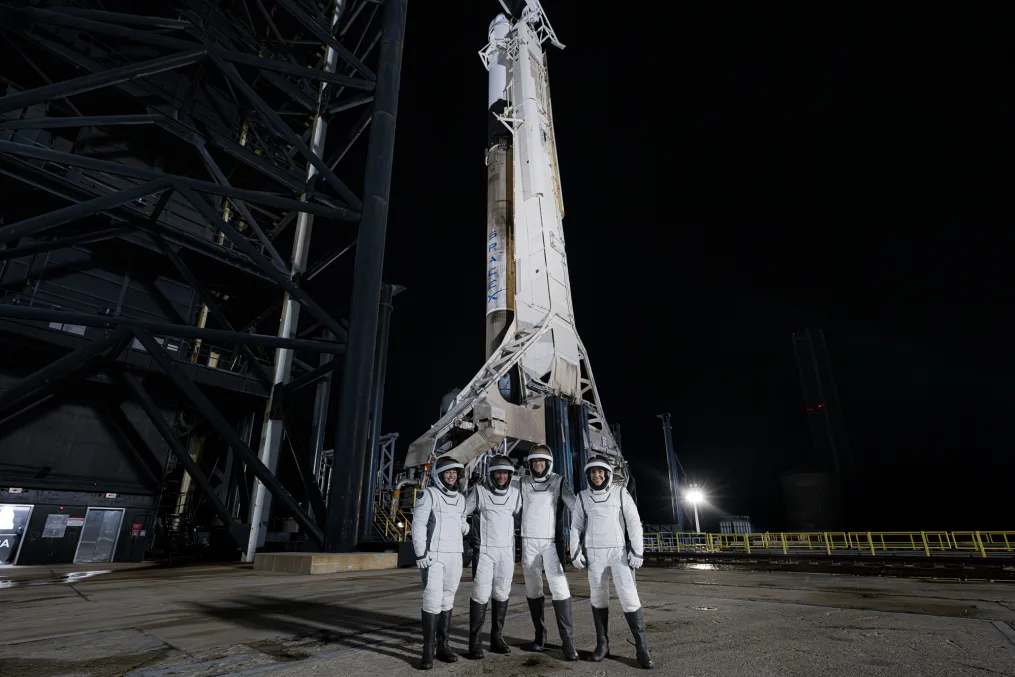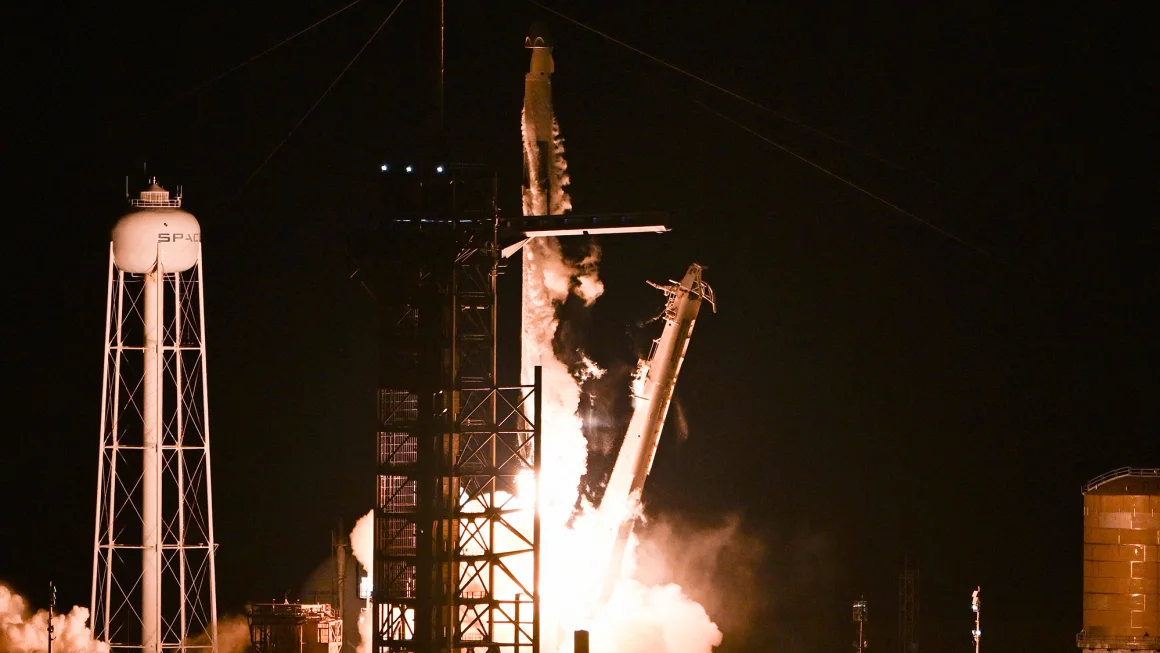SpaceX’s latest mission, Polaris Dawn, embarked on a daring trek into Earth’s Van Allen radiation belts early Friday, carrying a four-person crew of civilians who will aim to conduct the first-ever commercial spacewalk. The mission lifted off at 5:23 a.m. ET, after several weather-related delays.
SpaceX livestreamed the event on X, the social media platform formerly known as Twitter, which SpaceX CEO Elon Musk purchased in 2022. The mission marks a significant milestone, as it includes the first SpaceX employees to venture into space.

As the SpaceX Crew Dragon capsule entered orbit, launch director Frank Messina and ground controllers encouraged the crew, saying, “As you gaze towards the North Star, remember that your courage lights the path for future explorers. We trust your skills, your bravery, and your teamwork to carry out the mission that lies ahead.” The crew was reminded that the entire team was with them “every step of the way.”
Polaris Dawn: Overcoming Challenges
The launch followed multiple delays in late August and earlier in the morning due to weather concerns. The mission’s return, set for five days after launch, requires careful timing to ensure calm waters and winds for the crew’s splashdown. The Polaris Dawn mission will only have enough life support for five to six days in space, particularly after the planned spacewalk, which will deplete oxygen supplies.
The Ride to Orbit
After the countdown, SpaceX’s Falcon 9 rocket roared to life, launching from NASA’s Kennedy Space Center in Florida. The crew, seated inside the 13-foot-wide SpaceX Crew Dragon capsule, experienced the power of the rocket tearing away from Earth’s gravity.
The Falcon 9’s first stage fired for 2 ½ minutes before detaching and guiding itself back to Earth for landing on a seafaring platform, a cost-saving feature of SpaceX’s reusable rockets. The second stage continued to propel the Crew Dragon to 17,000 miles per hour (27,358 kilometers per hour) — reaching “orbital velocity” and allowing the Crew Dragon to navigate through space using its onboard thrusters.
Historic Spacewalk and Record-Breaking Heights
The Polaris Dawn mission is spearheaded by Jared Isaacman, billionaire founder of Shift4 Payments, who previously flew on SpaceX’s Inspiration4 mission in September 2021. This flight, however, aims for more than just a joyride.
Isaacman and his crew — former US Air Force pilot Scott “Kidd” Poteet and SpaceX engineers Anna Menon and Sarah Gillis — are set to break multiple records. The Crew Dragon capsule is targeting an orbit that would surpass NASA’s 1966 Gemini 11 mission, which reached 853 miles (1,373 kilometers). If successful, Polaris Dawn will beat that record by about 20 miles (32 kilometers), making it the highest Earth orbit since NASA’s Apollo missions.
In addition, Polaris Dawn could see Anna Menon and Sarah Gillis become the women who have traveled the farthest into space.

First Commercial Spacewalk Attempt
On day three of the mission, the civilian crew will attempt a groundbreaking spacewalk while orbiting at approximately 435 miles (700 kilometers) above Earth. The spacewalk, considered hazardous, will expose the entire crew and the interior of the Crew Dragon capsule to the vacuum of space. Repressurizing the cabin post-spacewalk poses risks, including potential toxin release from hardware, though SpaceX has taken measures to mitigate these dangers.
This spacewalk will mark a significant moment in commercial spaceflight history, demonstrating SpaceX’s growing capabilities and ambitions beyond Earth’s orbit.
Polaris Dawn is another step forward in the future of space exploration, with SpaceX continuing to break barriers and push the boundaries of human spaceflight.